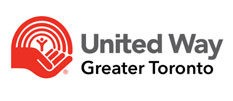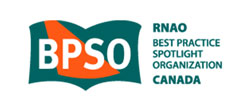Seizing the Chance to Try New Ideas
As the “new guard” settles into the provincial government, some previously proposed solutions are being scrapped while new announcements are made. This leaves us with the obvious question, “What’s next?” Instead of crystal ball gazing, let’s provide the new government and our Local Health Integration Network (LHIN) partners with great ideas to do what they’ve promised: improve health care and end hallway medicine.
Our health care system needs to be improved, but redefining the system is challenging. Players have vested/conflicting interests and resources are finite. But as health care organizations, we have the chance to bring fresh, creative ideas to the government to improve client outcomes and care experiences.
There are lots of health and home care models in our own backyard and elsewhere we can borrow–whether it’s ‘Hospital at Home’ initiatives in the States; Denmark’s re-ablement program, which helps seniors get to their highest level of functioning; the Dutch model, Buurtzorg, in which teams of nurses provide neighbourhood care; or Australia’s voucher system, where people can choose their care and provider from a service menu. Any combination can be tailored to fit Ontario’s landscape.
Technology-enabled care delivery continues to explode and is clearly the way forward. From telemedicine to biometrics, artificial intelligence to health apps and software aimed at improving communication and care co-ordination: more start-ups and established vendors are entering the health care tech space. The possibilities are exciting, endless and make my head spin!
VHA’s tech-focused research is underway—including using Virtual Reality to reduce dementia distress; automated short-term longitudinal analysis of speech and language in dementia; and investigating stress levels of those looking after loved ones with dementia through wearable technology.
Home and community care organizations need to be part of finding efficiencies across the health care system, particularly as the new government has announced the public piggybank is empty. Duplication of effort and unnecessary processes/rules in our work exist and add no benefit to clients (patients). We should identify them, get rid of them quickly and stay solution focused to help the government deliver on its promises.
One’s home is not only the preferred place of care for most people, but also the most cost effective. Yes, long-term care beds are needed. But if we focus our energy on prevention and rehabilitation—keeping people well for longer, living active and vibrant lives in the community—we won’t need the 30,000 new beds over the next 10 years this government has promised. Or if we do, they will look very different than anything we could even begin to imagine in 2018!
Carol Annett – CEO and President, VHA Home HealthCare








